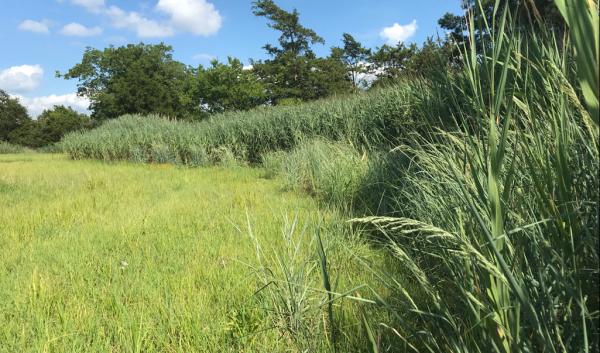The sea level along the East Coast is expected to rise as much over the next 30 years (10 - 14 inches) as it has over the last 100 years according to a new Sea Level Rise Technical Report.
This report provides updated predictions on the rate of sea level rise within the United States. When coupled with extreme tides and more frequent, intense storms, rising sea level is already causing damage to coastal forests. In the Northeast, this increasingly also impacts cropland. The effects are most evident on low lying coastal regions of the lower Delaware and Chesapeake Bay areas. From an agricultural standpoint, a buildup of salt in soils ultimately leads to reduced yields, overall crop loss, and sometimes loss of arable land. Saltwater intrusion causes the buildup of sodium ions in the soil which triggers drought stress in crops. The excessive buildup of sodium also harms soil health; it causes soils to seal up and inhibits water infiltration. Saltier soils are less conducive to the exchange of air and water necessary to maintain plant root systems. Additionally, less permeable soils can lead to increased nutrient and pesticide runoff as well as erosion from fields, which often have negative environmental impacts.
On the Delmarva Peninsula, corn, soybean, and wheat are the most common crops. Unfortunately, these traditional crops – largely grown to supply the poultry industry – don’t perform well in salt impacted soils.
Crops that do show promise on salt affected soils include sorghum and barley. However, establishment success and yield are variable by location and year due to the plant’s need for specific environmental site conditions. The University of Delaware is exploring other salt tolerant crops that may provide income as well as improve the environment.
Converting marginal saline fields to grow conservation plants is also being investigated. The NRCS Cape May Plant Materials Center is working with the Northeast Hub and University of Maryland. This partnership involves assessing perennial warm season grasses in salty soils. Specifically, the researchers are evaluating native grasses for use in herbaceous riparian buffer plantings. The planting of salt tolerant buffers at the field edge could also provide ecosystem services such as carbon capture, wildlife habitat, and water quality improvement. These are all potential benefits of a good perennial buffer strip. In the first year of planting from transplants, the grasses had a 50% to 75% establishment rate on two wet, saline sites located on fields along the lower Chesapeake Bay. These grasses are also being studied for potential uses in biomass production, poultry house bedding materials, and as a weed-free mulch product (salt hay).
As more cropland is impacted by saltwater flooding, the agricultural industry will have to change, and farmers may soon be forced to adapt.
The field management and crop rotations a farmer uses now may not work in another five or ten years. Fortunately, salt tolerant crop selections are being developed by scientists. However, new markets for these alternative crops will have to be established to secure them as viable solutions for the future.


